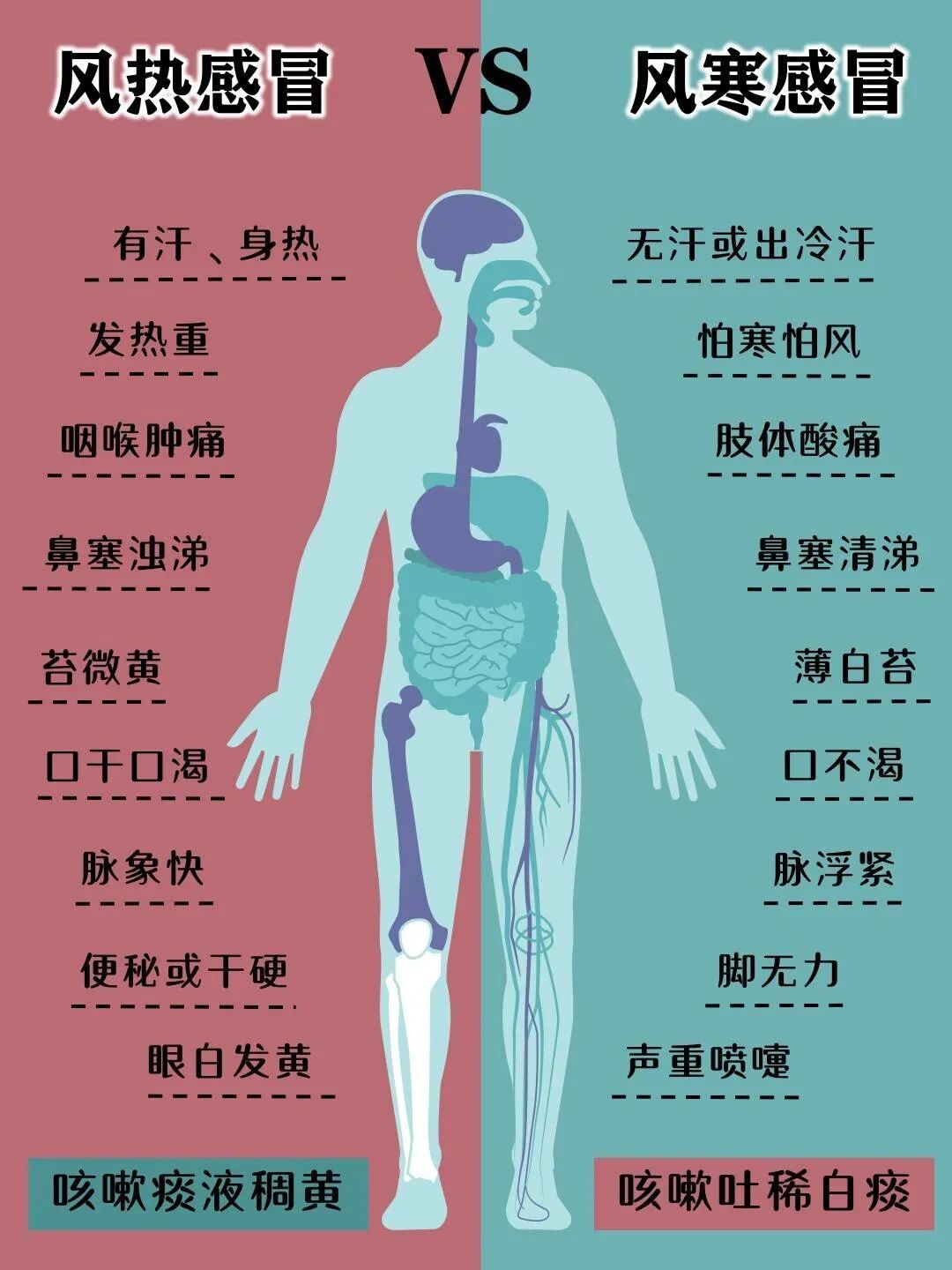Understanding Medicinal Herbs

Enhancing your understanding of medicine
Did you know? Colds can be classified into Wind-Cold and Wind-Heat types, and it is essential to treat them according to their symptoms; otherwise, the condition may worsen. So, how can we distinguish between Wind-Cold and Wind-Heat?
1. Differences in Symptoms of Wind-Cold and Wind-Heat Colds
Wind-Cold Cold is more common in individuals with weaker constitutions, with primary symptoms including aversion to cold, mild fever, relatively low body temperature, clear nasal discharge, nasal congestion with a heavy voice, sneezing, coughing up clear, thin white phlegm, sore throat, body aches, headaches, and a thin white tongue coating.
Wind-Heat Cold typically presents with fever, slight aversion to cold, coughing, producing thick yellow phlegm, nasal congestion, yellow or turbid nasal discharge, dry mouth and thirst, a desire to drink water, red and swollen sore throat, and a thin yellow tongue coating.

2. Treatment for Wind-Heat and Wind-Cold Colds
1. Common Chinese Patent Medicines for Wind-Heat Cold: Qingkailing Granules, Lianhua Qingwen Capsules/Granules, Yinqiao San, Sangju Yin, Shuanghuanglian Oral Liquid, Banlangen Granules, etc. Pudi Lan Oral Liquid, Lanjing Oral Liquid, Chuanwang Xiaoyan Tablets, Yinhuang Lozenges, and Qingyan Droplets can be used for treating Wind-Heat type sore throat.
2. Common Chinese Patent Medicines for Wind-Cold Cold: Ganmao Qingre Granules, Ganmao Soft Capsules, Wind-Cold Cold Granules, Tongxuan Lifelung Pills, Xiao Chai Hu Granules, Chuanxiong Cha Tiao San, Huo Xiang Zheng Qi Water, etc.
3. Western Medicine: From a Western medical perspective, there is no distinction between Wind-Cold and Wind-Heat colds; treatment is symptomatic, such as using acetaminophen or ibuprofen for fever, chlorpheniramine maleate for nasal congestion, and for common colds, using combination preparations like compound acetaminophen and amantadine capsules, compound beidougen acetaminophen tablets, amantadine yellow tablets, and compound cold relief granules.

【Warm Reminder】
In general, once you feel unwell, you should first confirm your type of cold, and during special periods, it is necessary to distinguish it from influenza. Before taking any medication, carefully read the instructions to understand the drug’s components, indications, contraindications, dosage, and adverse reactions.
Typically, a common cold can self-resolve in about 7 days, but if the cold lasts more than 7 days, or even more than half a month without improvement, or if symptoms worsen, it is best to see a doctor promptly for treatment under medical guidance.
Previous articles:
Which patients should prioritize sartans for hypertension?
Comprehensive guide to diabetes medications
Do metronidazole and chlorhexidine solutions need to be diluted before use?
Which antihistamine is the most effective: loratadine, desloratadine, or bilastine?
Effective remedy for acute and chronic rhinitis → Qinzhi Rhinitis Syrup
✦+
+

Understanding Medicinal Herbs
Follow me | Enhance your understanding of medicine
Committed to spreading knowledge about medication health

